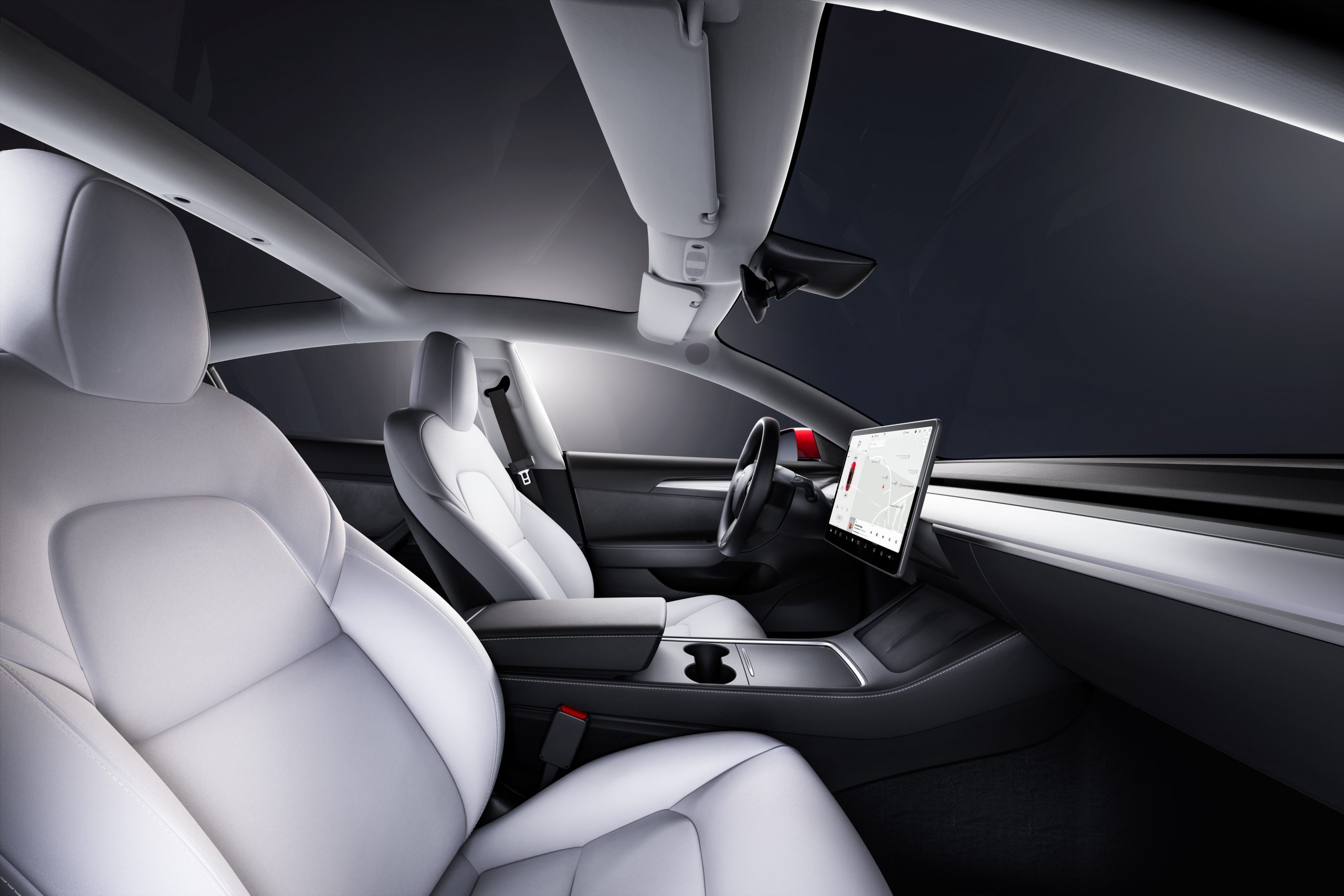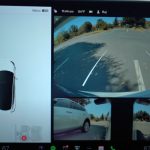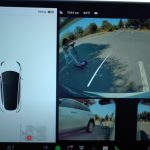Tesla has some of the most technologically advanced and sustainable vehicles consumers can buy on the market today. However, as Tesla Raj notes in one of his newest videos, his Tesla Model 3, along with other vehicles in the company’s lineup, are missing some of the most basic features that are available on models from other companies that are several years old. This begs the question: Would Tesla vehicles be even better with the five basic features Raj requests?
Cross-Traffic Alert System
One of the most important features that Raj lists is the Cross-Traffic Alert System. Noting that his wife’s 2016 Toyota RAV4 Hybrid has the system, which is highly effective in alerting the driver of an oncoming obstacle that is out of sight, Raj said his Model 3 lacks this somewhat basic safety feature.
While the Model 3 does offer wide-angle views from both rear quarter panels that could assist in a little more of a view, it still does not utilize any sort of system to sense objects, people, or vehicles that may be moving toward the Model 3. In a crowded Supermarket parking lot, Cross-Traffic Alert Systems are highly effective in keeping the driver vigilant as others look for a spot or shoppers head in or out of the store, perhaps with a heavy cart full of food. This simple addition could keep the car undamaged and could even save a life. Raj’s daughter, who was riding a scooter in the demonstration, was below the vehicles on either side of the Tesla. She was impossible to see until she entered the vehicle’s repeater camera view, which would likely give the driver a fraction-of-a-fraction of a second to stop.
As you can see in the pictures below, smaller obstacles, like shopping carts, as well as small children, are hidden by the vehicles parked next to Raj’s Model 3. A child is not seen until they are right behind the vehicle. These would be solved with basic sensors, which Tesla already has installed in their vehicles.
- The Tesla Model 3’s rear-view cameras lack a Cross-Traffic Alert System, which would help drivers see smaller obstacles that could be hidden by nearby vehicles (Credit: Tesla Raj)
- The Tesla Model 3’s rear-view cameras lack a Cross-Traffic Alert System, which would help drivers see smaller obstacles that could be hidden by nearby vehicles (Credit: Tesla Raj)
360-Degree Camera Views
Raj’s wife’s 2016 RAV4 Hybrid also equips a 360-degree camera, which the Model 3 also lacks. In October 2020, Tesla CEO Elon Musk confirmed that a Birds-Eye, 360-degree view of the vehicle would be coming with Full Self-Driving. It has not been released with the current iteration of Tesla’s semi-autonomous driving program, but Musk may have meant that the feature would not be released until FSD is actually complete, which would activate the company’s plans for a Robotaxi Fleet. However, so many vehicles have this feature already, which would activate full-range views of every obstacle around the car. The wide-range perspective would even help complement the previously-mentioned Cross-Traffic Alert System.
Vector-space bird’s eye view coming with FSD
— Elon Musk (@elonmusk) October 3, 2020
Tesla does offer those repeater cameras to help with a wider view of the car. However, they do not show a Birds-Eye angle, nor do they show the sides of the car.
Apple Music + CarPlay
If you follow Raj and Elon Musk on Twitter, you will know that Raj has requested the Tesla CEO to add this feature on many occasions, and for good reasons. While Tesla does currently offer Spotify, the world’s largest streaming platform for music and podcasts, and Tidal, another streaming app, the cars do not feature Apple Music support. Spotify does offer high-quality streaming, granted you are connected to a network that can support high download speeds. Tesla’s sound system, which has been noted as high quality by many, including Musk himself (surprise, surprise), is not getting used to its full capabilities without high-quality streaming services.
Apple Music supports Dolby Atmos’ spatial audio, which allows for high-quality streaming.
It would also support a lot of Tesla owners, as a poll Raj conducted showed 74 percent of the 2,292 votes received came from Apple owners utilizing iOS.
Tesla Owners what operating system is on your phone?
— Tesla Raj (@tesla_raj) July 28, 2022
Apple’s CarPlay is also highly intuitive, easy to use, and is supported by most automotive brands. I’m not sure if this comes down to some tech-based rivalry or just the fact that Tesla is not willing to license Apple’s software, but it would be a huge upside if these features were compatible with the vehicle.
Ease of Access to the Frunk
The lack of an engine in electric vehicles allows the Frunk – or Front Trunk – to exist. It gives owners just a little bit more room to store things like luggage or groceries, and it varies from vehicle to vehicle. The F-150 Lightning, for example, has a sizeable Frunk, basically adding a sedan-sized trunk to the already large bed area.
Ford F-150 Lightning unveiled: Price, Release date, Range, Features and more
The Model 3 Frunk is not easy to access, at least in Raj’s opinion. He would like to see an exterior Frunk access button or sensor that could remove the need to open the hood with the Tesla App or from the interior touch screen. Some vehicles have a sensor for trunks located underneath the rear bumper. It can be tapped with a foot to open and comes in handy when your hands might be full of groceries.
Tesla Model 3 frunk cargo space [Source: PTFI via Twitter]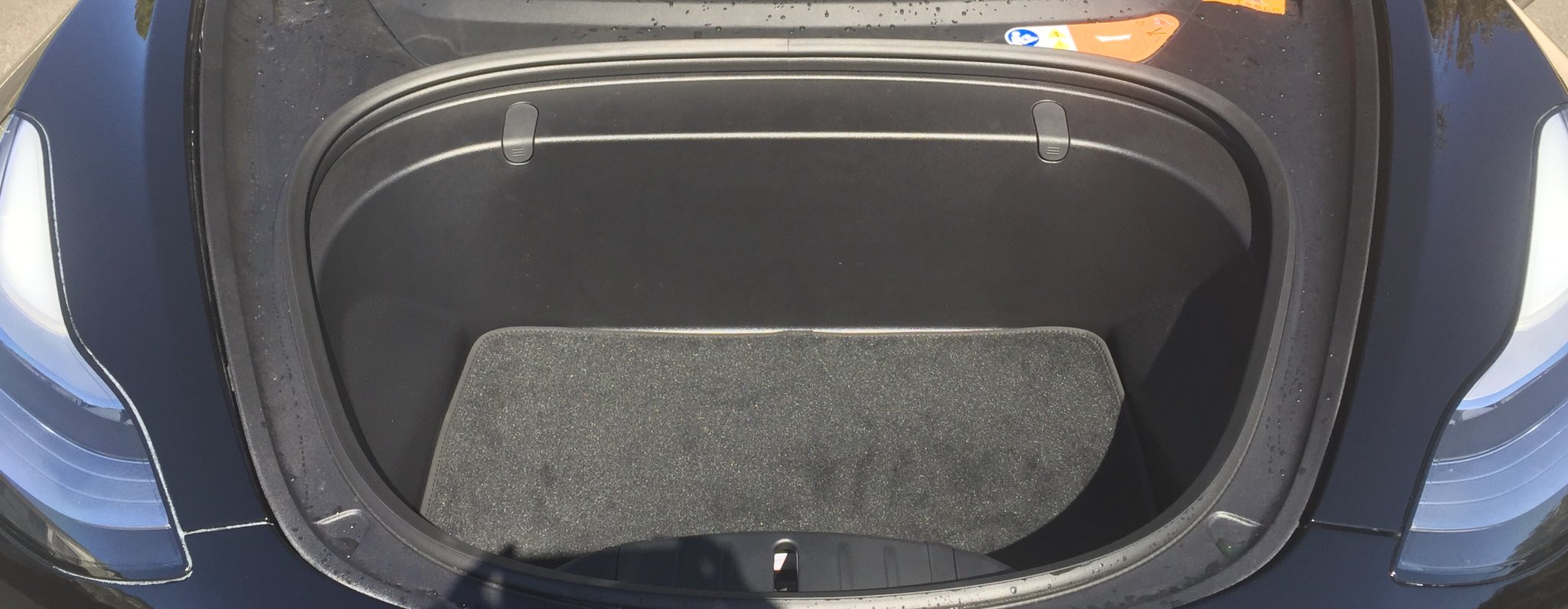
The Frunk is one of the most underrated parts of an electric vehicle, in my opinion. It should be easier to access, and you should not need a screen to do so.
Fleet-based User Generated Content
This is perhaps one of the most practical ideas Raj included in his video and is something that navigation apps like Waze and Apple Maps have included in their platforms. Alerting other drivers of hazards, police, accidents, stoppages, and other important occurrences on the road would be ideal to share between Tesla drivers. Reporting things like road debris or an officer shooting radar would most certainly be advantageous to the safety of drivers. It has allowed people to communicate with road conditions and is constantly updated by asking future drivers whether the hazard or obstacle is still present.
Credit: Apple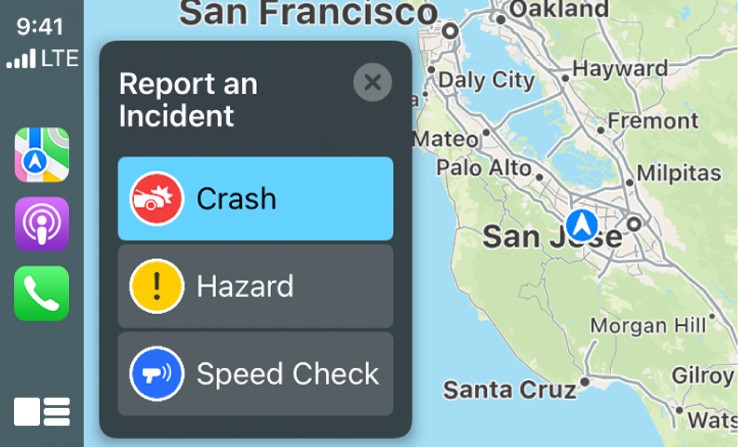
What do you think about Tesla Raj’s list? Be sure to let him know on Twitter @tesla_raj, and be sure to comment your thoughts below.
News
Tesla launches in India with Model Y, showing pricing will be biggest challenge
Tesla finally got its Model Y launched in India, but it will surely come at a price for consumers.

Tesla has officially launched in India following years of delays, as it brought its Model Y to the market for the first time on Tuesday.
However, the launch showed that pricing is going to be its biggest challenge. The all-electric Model Y is priced significantly higher than in other major markets in which Tesla operates.
On Tuesday, Tesla’s Model Y went up for sale for 59,89,000 rupees for the Rear-Wheel Drive configuration, while the Long Range Rear-Wheel Drive was priced at 67,89,000.
This equates to $69,686 for the RWD and $78,994 for the Long Range RWD, a substantial markup compared to what these cars sell for in the United States.
🚨 Here’s the difference in price for the Tesla Model Y in the U.S. compared to India.
🚨 59,89,000 is $69,686
🚨 67,89,000 is $78,994 pic.twitter.com/7EUzyWLcED— TESLARATI (@Teslarati) July 15, 2025
Deliveries are currently scheduled for the third quarter, and it will be interesting to see how many units they can sell in the market at this price point.
The price includes tariffs and additional fees that are applied by the Indian government, which has aimed to work with foreign automakers to come to terms on lower duties that increase vehicle cost.
Tesla Model Y seen testing under wraps in India ahead of launch
There is a chance that these duties will be removed, which would create a more stable and affordable pricing model for Tesla in the future. President Trump and Indian Prime Minister Narendra Modi continue to iron out those details.
Maharashtra Chief Minister Devendra Fadnavis said to reporters outside the company’s new outlet in the region (via Reuters):
“In the future, we wish to see R&D and manufacturing done in India, and I am sure at an appropriate stage, Tesla will think about it.”
It appears to be eerily similar to the same “game of chicken” Tesla played with Indian government officials for the past few years. Tesla has always wanted to enter India, but was unable to do so due to these import duties.
India wanted Tesla to commit to building a Gigafactory in the country, but Tesla wanted to test demand first.
It seems this could be that demand test, and the duties are going to have a significant impact on what demand will actually be.
Elon Musk
Tesla ups Robotaxi fare price to another comical figure with service area expansion
Tesla upped its fare price for a Robotaxi ride from $4.20 to, you guessed it, $6.90.

Tesla has upped its fare price for the Robotaxi platform in Austin for the first time since its launch on June 22. The increase came on the same day that Tesla expanded its Service Area for the Robotaxi ride-hailing service, offering rides to a broader portion of the city.
The price is up from $4.20, a figure that many Tesla fans will find amusing, considering CEO Elon Musk has used that number, as well as ’69,’ as a light-hearted attempt at comedy over the past several years.
Musk confirmed yesterday that Tesla would up the price per ride from that $4.20 point to $6.90. Are we really surprised that is what the company decided on, as the expansion of the Service Area also took effect on Monday?
But the price is now a princely $6.90, as foretold in the prophecy 😂
— Elon Musk (@elonmusk) July 14, 2025
The Service Area expansion was also somewhat of a joke too, especially considering the shape of the new region where the driverless service can travel.
I wrote yesterday about how it might be funny, but in reality, it is more of a message to competitors that Tesla can expand in Austin wherever it wants at any time.
Tesla’s Robotaxi expansion wasn’t a joke, it was a warning to competitors
It was only a matter of time before the Robotaxi platform would subject riders to a higher, flat fee for a ride. This is primarily due to two reasons: the size of the access program is increasing, and, more importantly, the service area is expanding in size.
Tesla has already surpassed Waymo in Austin in terms of its service area, which is roughly five square miles larger. Waymo launched driverless rides to the public back in March, while Tesla’s just became available to a small group in June. Tesla has already expanded it, allowing new members to hail a ride from a driverless Model Y nearly every day.
The Robotaxi app is also becoming more robust as Tesla is adding new features with updates. It has already been updated on two occasions, with the most recent improvements being rolled out yesterday.
Tesla updates Robotaxi app with several big changes, including wider service area
News
Tesla Model Y and Model 3 dominate U.S. EV sales despite headwinds
Tesla’s two mainstream vehicles accounted for more than 40% of all EVs sold in the United States in Q2 2025.

Tesla’s Model Y and Model 3 remained the top-selling electric vehicles in the U.S. during Q2 2025, even as the broader EV market dipped 6.3% year-over-year.
The Model Y logged 86,120 units sold, followed by the Model 3 at 48,803. This means that Tesla’s two mainstream vehicles accounted for 43% of all EVs sold in the United States during the second quarter, as per data from Cox Automotive.
Tesla leads amid tax credit uncertainty and a tough first half
Tesla’s performance in Q2 is notable given a series of hurdles earlier in the year. The company temporarily paused Model Y deliveries in Q1 as it transitioned to the production of the new Model Y, and its retail presence was hit by protests and vandalism tied to political backlash against CEO Elon Musk. The fallout carried into Q2, yet Tesla’s two mass-market vehicles still outsold the next eight EVs combined.
Q2 marked just the third-ever YoY decline in quarterly EV sales, totaling 310,839 units. Electric vehicle sales, however, were still up 4.9% from Q1 and reached a record 607,089 units in the first half of 2025. Analysts also expect a surge in Q3 as buyers rush to qualify for federal EV tax credits before they expire on October 1, Cox Automotive noted in a post.
Legacy rivals gain ground, but Tesla holds its commanding lead
General Motors more than doubled its EV volume in the first half of 2025, selling over 78,000 units and boosting its EV market share to 12.9%. Chevrolet became the second-best-selling EV brand, pushing GM past Ford and Hyundai. Tesla, however, still retained a commanding 44.7% electric vehicle market share despite a 12% drop in in Q2 revenue, following a decline of almost 9% in Q1.
Incentives reached record highs in Q2, averaging 14.8% of transaction prices, roughly $8,500 per vehicle. As government support winds down, the used EV market is also gaining momentum, with over 100,000 used EVs sold in Q2.
Q2 2025 Kelley Blue Book EV Sales Report by Simon Alvarez on Scribd
-

 Elon Musk2 weeks ago
Elon Musk2 weeks agoTesla investors will be shocked by Jim Cramer’s latest assessment
-

 News3 days ago
News3 days agoTesla debuts hands-free Grok AI with update 2025.26: What you need to know
-

 Elon Musk1 week ago
Elon Musk1 week agoElon Musk confirms Grok 4 launch on July 9 with livestream event
-

 Elon Musk5 days ago
Elon Musk5 days agoxAI launches Grok 4 with new $300/month SuperGrok Heavy subscription
-

 News2 weeks ago
News2 weeks agoTesla Model 3 ranks as the safest new car in Europe for 2025, per Euro NCAP tests
-

 Elon Musk2 weeks ago
Elon Musk2 weeks agoxAI’s Memphis data center receives air permit despite community criticism
-

 News5 days ago
News5 days agoTesla begins Robotaxi certification push in Arizona: report
-

 Elon Musk2 weeks ago
Elon Musk2 weeks agoTesla scrambles after Musk sidekick exit, CEO takes over sales

